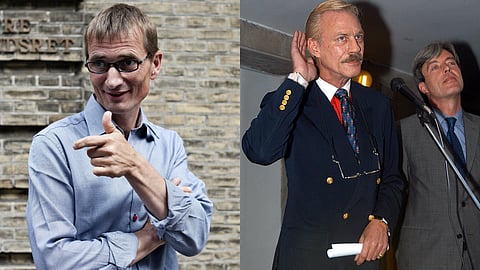
- HOMEGROWN WORLD
- #HGCREATORS
- #HGEXPLORE
- #HGVOICES
- #HGSHOP
- CAREERS
- ABOUT US
- CONTACT US

On a cold, dark night in December 1995, a Soviet-era Latvian Antonov-26 aircraft flew low over Purulia, a remote district in West Bengal's forested jungle mahal, and dropped three wooden pallets packed with sophisticated automatic weapons. Assault rifles, rocket launchers, and more than sixteen thousand rounds of ammunition parachuted into the darkness, landing across Purulia's Jhalda, Khatanga, Belamu, and Maramu villages. Four days later, the same plane was intercepted by the IAF and forced to land in Mumbai. Its crew was arrested, but not before the alleged mastermind Kim Davy — alias Niels Holck — made a daring escape to Nepal.
Who were the intended recipients of these weapons? Why were they airdropped in this particular remote region of eastern India? Was this an attempt to destabilise the Communist Party of India (Marxist) government, which held power in West Bengal at the time? Or was it something far more sinister — a complex transnational conspiracy, orchestrated by global intelligence networks and facilitated across continents in a geopolitical game of chess?
A clandestine airdrop of military-grade weapons in the middle of rural Bengal, the 1995 Purulia Arms Drop case was one of the most bizarre and murky events in modern Indian history. Nearly 30 years later, the full truth behind the incident remains elusive. It's shrouded in mystery and rife with allegations of CIA involvement that have lingered ever since, but here's what we do know now:
On 17 December 1995, the Antonov AN-26 — a Soviet-era twin-engine turboprop transport aircraft registered in Latvia — begun its journey in Karachi and made a scheduled refuelling stop in Varanasi before entering West Bengal airspace. Its crew consisted of five Latvians and two foreign nationals: Peter Bleach, a British arms dealer with alleged ties to the British intelligence community; and Niels Holck, a Danish national operating under the alias of Kim Davy. While the plane initially left seemingly undetected after the drop, it was intercepted by the Indian Air Force four days later when it re-entered Indian airspace en route to Phuket, Thailand, and was forced to land at Mumbai's Santa Cruz airport.
Indian authorities quickly arrested Bleach and the Latvian crew members, all of whom were tried, convicted, and sentenced to life imprisonment. Holck, however, escaped through Nepal and returned to Denmark, where he has lived freely ever since. India has made repeated efforts to extradite him, but the Danish government has refused, citing concerns over possible human rights violations in Indian prisons.
The CBI investigation pointed towards a socio-spiritual organization called Ananda Marga, which had a significant presence in Purulia. Once banned in India and accused of involvement in violent clashes with cadres of the CPI(M), Ananda Marga had long claimed persecution under the Left Front government in West Bengal. Holck himself stated in interviews that the weapons were intended to help the group defend itself from CPI(M) attacks. He alleged that the operation had the tacit approval of Indian intelligence officials, and claimed that it was even encouraged by some within the Indian government to destabilize the longstanding Left regime in the state. Peter Bleach, too, echoed Holck's claims — alleging that both British and Indian intelligence agencies were aware of the arms drop.
The Central Bureau of Investigation, however, dismissed these claims, stating that while they had "clinching" evidence against Holck, there was no proof linking Indian politicians or intelligence agencies to the incident. Still, many independent journalists and observers found it hard to believe that such a large-scale arms drop could occur undetected, especially over Indian territory, without at least some level of institutional oversight — or deliberate blindness.
The fact that Bleach was released in 2004 after spending only eight years of his life imprisonment sentence following sustained diplomatic pressure from the British government further fuelled speculations that there were layers to the case the public was never meant to uncover.
But the story was far from over. In 2016, Mangla Prasad Patel — a key witness who had ferried the crew in Varanasi — was found murdered in Bihar. His death added to a long list of unanswered questions and unresolved threads that continue to haunt the case.
To this day, the Purulia arms drop remains a symbol of India's murky entanglements with covert operations, global intelligence networks, and internal political rivalries. It was not just an unauthorised arms drop — it was a glimpse into a shadow world where ideology, espionage, and geopolitical power games intersect.
To learn more about the 1995 Purulia Arms Drop case, read investigative journalist Charan Nandy's 'The Night It Rained Guns'.
